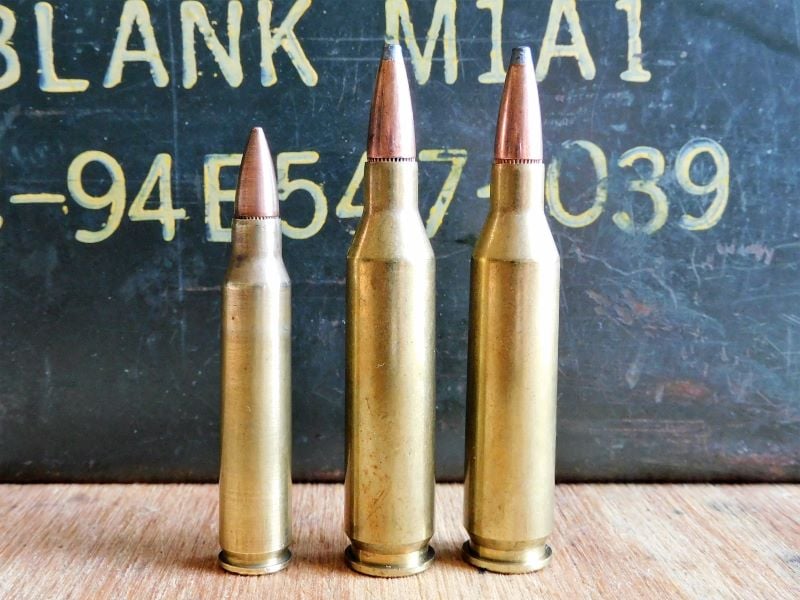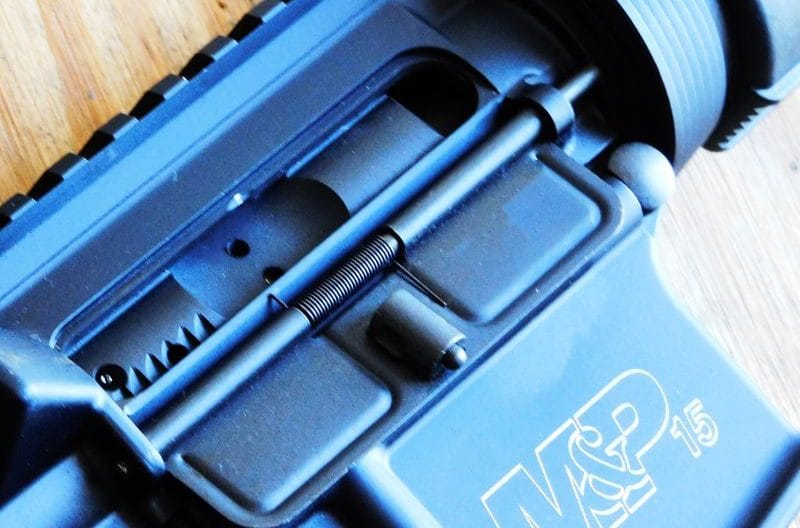I often hear headspace casually discussed amongst gun shop employees and subject matter experts. It’s one of those parts of gun vocabulary that can sail over your head if you are new to firearms. There is even some variance to what it describes amongst those who say it. So, what is headspace and, perhaps more importantly, why is it important? I’ve shot dozens of rifles over the years without much of a thought or symptom about headspace problems. Recently though, I ran into a real-life illustration that shows what it is and what too much or too little of it looks like.

What is headspace?
In the most general possible terms, headspace is the distance from the front of the action to a determined point in the chamber that prevents excessive forward movement of the cartridge into the barrel. Proper headspacing is important in pistol and rifle designs, but is more consequential with rifles.
All cartridges have something preventing them from going too far into the barrel with a closed action.

Some cartridges have an exposed rim at the case head. The rim meets the chamber wall and the cartridge can go no further. While there are many rimmed cartridges out there, only some of the oldest headspace this way. Older guns chambered in .22 rimfire and centerfire cartridges like the .38 Colt have a cylinder or chamber that is the same diameter as the brass case. The rim is the only part of the case that prevents it from advancing further.
Most pistol cartridges, both rimmed and rimless, are prevented from advancing by a machined shoulder inside the chamber that mates with the mouth of the brass case. The .38 Special and .357 Magnum, despite having a rim, headspace on the case mouth. Interestingly, the .38 relies on its rim when used in the longer .357 chamber.
Most modern rifle cartridges, such as .223 Remington or .30-06, achieve proper headspace because of the cartridge’s bottleneck. Some magnum rifle cartridges, termed “belted” magnums, headspace off both the bottleneck and a flared belt at the rear of the case head that matches a corresponding machined recess in the chamber wall.
What does too little headspace look like?
A firearm with too little headspace is generally a straightforward diagnosis. In this case, the chamber tolerances are too tight or the shoulder to stop the round is machined too shallow. Conversely, the recoil shield or bolt may lock up too tight.

A rifle or pistol with too little headspace commonly fails to fully chamber the correct ammunition. Some ammunition may not have the correct manufacturer specifications. Meanwhile, neck-sized, rather than fully-size, reloaded ammunition can also fail to chamber. With these exceptions noted, if the firearm fails to go into battery or the action requires excessive force to do so, you have improper headspace.
Most modern firearms have safety features that prevent them from discharging if the action is out of battery. However, these safety features are compromised sometimes. Recent litigation alleged early versions of the Sig P320 fired out of battery. However, older designs without these redundancies can also fire out of battery. The Canadian Ross straight-pull rifle of Great War infamy had this defect.
An out-of-battery detonation leads to unsafe and uncontained pressures that can rupture the case, vent hot gas and debris at the shooter, or pop the firearm. To fix a firearm with too little headspace, the locking lugs need setback or chamber reamed to acceptable dimensions.
What about excessive headspace?
A firearm with excessive headspace is harder to diagnose when on the firing line. In this case, the front of the bolt or action and case shoulder have too much room between them.
One potential excessive headspace symptom is failure of the ammunition to fire. The cartridge might have so much play that the firing pin drives the cartridge forward into the chamber instead of hitting the primer of the case to set it off. You might have an otherwise perfect-looking, unbroken firing pin. In addition, ammunition may have a minute primer strike — or no hit at all. It’s easy to blame the ammunition, but it could be excessive headspace.
Bulged cases and flattened primers are another symptom of excessive headspace. The excessive movement of the cartridge in the chamber translates to more room for the cartridge to move. The movement drives the unsupported brass outward with the primer and flattens it against the action’s rear or completely separates from the case.
In a best-case scenario, the case and primer retains its integrity, but the action is difficult to cycle with poor accuracy compared to a properly headspaced firearm. At worst, the case could rupture with a lost primer and hot gasses and metal fragments can then strike the shooter and damage the firearm.

I experienced similar headspace issues on the range when I took a new-to-me 1930s vintage Japanese Type 38 Arisaka to the range. The Arisaka is one of the strongest and best heat-treated bolt action rifles ever made. However, when I touched off the first shot and went to work the bolt, I knew something was wrong. I saw the clean miss of the bullet to the left of a generous-sized target at fifty yards. The bolt wouldn’t cam open and had to be opened with a rubber mallet. The cartridge case extracted perfectly but the case’s primer flattened out with a pronounced bulge in the lower third of the case wall. At that point, I quit shooting.
Excessive headspace can be the result of a defective factory barrel or receiver that has stretched over time. The barrel must be turned rearward and chamber re-reamed with machining tools for correct headspace.
An Ounce of Prevention
When dealing with older firearms, particularly military surplus rifles, headspace is a pronounced concern. These firearms have unknown origin and maintenance. The chambers often start generously for the action to run with some dirt or grit inside. Although ammunition is usually loaded conservatively, these circumstances dictate all firearms should be properly inspected. Even new firearms can be defective from the factory. The calculus multiplies if you are a tinkerer. Whether restoring old firearms or home-building an AR-15, ensuring proper headspace is vital before the project is complete. For that task, headspace gauges are essential.
There are three types of headspace gauges: go, no-go, and field. A go-gauge that fully chambers means you are good to go. A no-go gauge that won’t completely seat on a new rifle means it’s within specifications. If it closes completely, it is no-go. However, it is possible for a well-worn, but safe, rifle to close on a no-go gauge. A field gauge ensures a rifle truly fails the no-go test. The field gauge for a given caliber is the longest of the bunch and, if the action closes on it, the rifle has excessive headspace.
The Bottom Line
Headspace ceases to be an empty word when the gauges come out. Proper headspace is vital for a firearm’s function and accuracy but, most importantly, for the shooter’s safety. Whether you shoot old or new firearms, headspace is a term worth knowing. The symptoms of too little or too much headspace are worth hearing about rather than experiencing. While a set of headspace gauges might make you return to the drawing board or turn down a potential purchase, it’s better than learning headspace issues firsthand.

